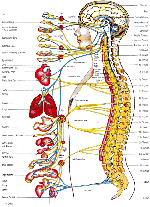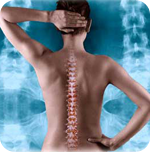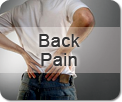


Conditions Treated
Computer Posture
People use computers every day both at home and at work. Now more than ever, postural changes, such as elevated and rounded shoulders, and forward head carriage, are playing
a role in causing neck problems. The muscles of the neck originate at the spine and attach to areas such as the shoulder blades, back of head, collarbone, sternum, and the
first couple of ribs. This is why the neck is a probable source of pain and dysfunction elsewhere. The fact is, if someone has poor "computer posture" they will be more vulnerable
 to tension headaches, shoulder pain and arthritis.
to tension headaches, shoulder pain and arthritis.
Treatment Plan
The doctors will prescribe exercises to do at home to help stretch tight overactive muscles, as well as exercises to help strengthen weak underactive muscles. All exercises are designed by the doctors to assist you in the delicate balance of proper posture. The doctors will re-educate muscles and break up scar tissue by using heat and gentle muscle work. When the doctors feel the patient is ready, joint manipulation is utilized to help speed the healing process.
About Neck Pain
It is estimated that nearly every American will experience some type of Neck Pain in his/her lifetime. Ironically, unlike Lower Back pain, most people do not actively seek treatment until the pain is too intense. Instead they self-medicate with over the counter drugs or experiment with prescription drugs. Most neck problems are Neuro-musculo-skeletal, meaning the root of the problem is from a nerve, a muscle, a bone or all three. Click below for a brief analysis of various conditions treated successfully in our office. Herniated Disc A disc does not "slip". It can tear, bulge, or herniate. All are problems which affect exiting nerves from the spine that irritate muscles via intermittent spasm. This condition can cause numbness, burning pain, and tingling into the shoulder blade or into the arm and fingers. People often have difficulty turning their head, as well as finding a comfortable position for their neck when sleeping.
Less than 1% of our patients require surgery as an outcome. Our plan is to use traction, electric stimulation, ultrasound and other pain controlling modalities, with a combination of special neuro-muscular pressure points to release scar tissue, and specific joint mobilization techniques that take the pressure off other spinal discs and nerve roots, so your injury can heal more quickly. We assist you with specific exercises designed for your posture, as well as exercises for home.














